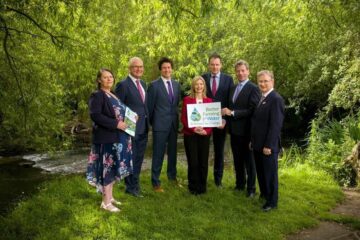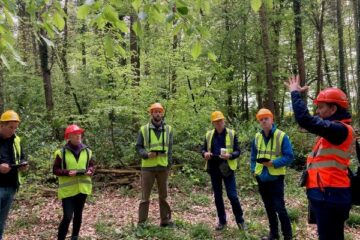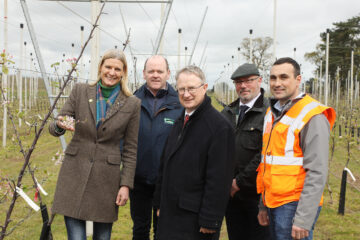A major Teagasc open day, ‘Farming for a Better Future’, took place at the Teagasc Soil, Environment and Land use Research centre in Johnstown Castle, County Wexford. It displayed technologies that farmers can adopt to improve the economic, social and environmental sustainability of their farming enterprises.
The latest from the Teagasc research programme to improve environmental sustainability, which focuses on reducing Greenhouse gas emissions, improving water quality, enhancing biodiversity and maintaining soil health, is being displayed.
Speaking at the event ‘Farming for Better Future’, County Wexford, Teagasc Director Professor Frank O Mara said, “the key priority for Teagasc at this point in time is to provide leadership and support for the transformation of our agri-food system, which embraces the economic, environmental and social dimension of sustainability. Our grass-based systems of livestock production, which dominate Irish agriculture, give us a solid foundation to build on from an environmental sustainability perspective.”
In relation to emission reductions, Professor O Mara said, “the debate is often framed around a cut to the national herd, but there is an alternative, which is the development and deployment of technologies and improvements in the systems of production to reduce emissions. It will be challenging, as the technologies outlined in the 2019 Teagasc MACC are not nearly sufficient. However we have an active research programme and there is a range of additional technologies at various stages in the research pipeline. This includes research to provide more accurate measurements of soil carbon emission and sequestration to help clarify the LULUCF situation and prepare for carbon farming.”
Dr David Wall, Enterprise Leader at Teagasc Johnstown Castle said, “technologies that can help farmers maintain productivity while increasing environmental sustainability include establishing multi species and grass clover swards, sustainable fertiliser technologies and organic manure management, good grazing and silage conservation management and improved animal health.”
Dr Karl Richards, Head of the Teagasc Soil, Environment and Land use Research centre said, “there are four steps that can be taken to reduce on farm emissions; Reduce Nitrogen emissions; Reduce enteric and manure methane and ammonia; enhance carbon sequestration and reduce peat emissions; and improve energy efficiency and displace fossil fuels.”
Source: Teagasc



